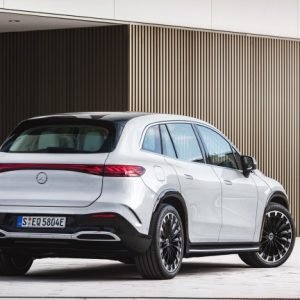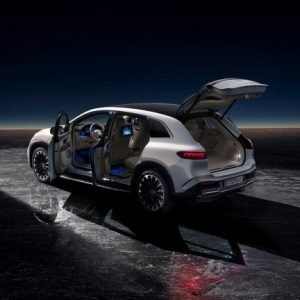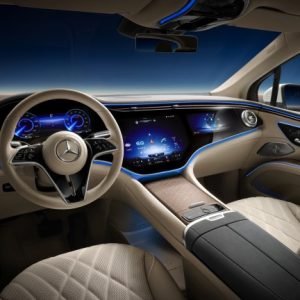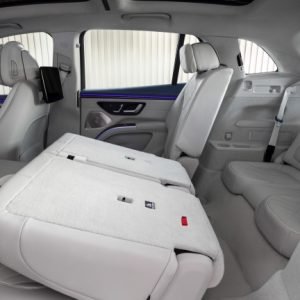0.0/10
Our Tier Classification:
Type of car:
Country of origin:
Make:
Share it:
Car manufacturers often offer different variations of the same model, allowing you to customize your vehicle to suit your preferences. Our goal is to showcase the range of performance options available, from the most basic to the most advanced. For precise pricing and specifications of each variant, please visit the official manufacturer’s website through the ‘prices section’ links by country.
Performance
Consumption
Acceleration (0-100km/h / 60mph)
Top Speed
Power
Power (kW)
Battery capacity
Dimensions
Doors
Max. seats
Lenght
Height
Width
Width with mirrors
Weight
Trunk Volume
Frunk Volume
We aim to provide both the manufacturer’s estimated range, as listed on their official websites, and a realistic range based on actual driving conditions. This includes the impact of weather, as well as the use of heating, air conditioning, and other factors that could affect performance. This data is supported by data from official manufacturer websites, user feedback, and EV-Database.org.
Estimated Range by manufacture
Minimal Estimated range
Maximal Estimated range
Disclaimer: The standard conditions for our range estimates assume an ambient temperature of 23 degrees Celsius (73.4 Fahrenheit) without the use of air conditioning. Please note that these ideal conditions are not always practical, and the real-world range may be lower.
Approximate actual distance given by feedback
Real range - City ❄️
Real range - Highway ❄️
Real range - City ☀️
Real range - Highway ☀️
Disclaimer: We also consider ‘worst-case’ scenarios. For ‘Cold’ conditions, we assume -10 degrees Celsius (14 Fahrenheit) with heating on, and for ‘Hot’ conditions, we maintain 23 degrees Celsius (73.4 Fahrenheit). We include the effects of different driving environments, such as city and highway, with speed limits adhered to as per US and European standards (excluding unlimited German autobahns). This data is corroborated by EV-Database.org and feedback from real users.
Charging times
Charging time 0-100% - Home (2.3 kW)
Charging time 0-100% -Wallbox (11 kW)
Charging time 10-80% Fast charging (175kW)
There are several methods of charging electric vehicles, which we categorize into three types: standard home plug, home wallbox, and highway superchargers (CCS).
Home plug: Generally offers a charging capacity ranging from 1.5 to 3.7 kWh. We use 2.3 kWh as an average reference, but actual rates may vary depending on the vehicle model.
Wallbox: Although wallboxes can support up to 22 kWh, government regulations in some countries may require special permission for higher capacities. Therefore, we display the maximum standard output of 11 kWh that can be used without additional permissions.
Supercharger CCS: Depending on the service provider and car model, these chargers typically offer around 175 kWh, but this can vary based on weather conditions and car specifications. Some cars have a maximum kWh limit to prevent malfunctions, so if a charger offers 175 kWh or 150 kWh and your car only shows a maximum of 100 kWh, don’t be alarmed.
All this data is coming from an average calculation between users’ feedback and EV-Database.org
Welcome to the dawn of a new era in electric vehicles (EVs), where the Mercedes Benz EQS SUV isn’t just another luxury EV—it’s a glimpse into the future of driving. Unveiled in 2021 and hitting the roads by 2022, this all-electric stunner from the storied German automaker brings the vaunted S-class pedigree into the sustainable realm. With sleek lines that flow as smoothly as a bead of oil and a whisper-quiet operation that makes librarians seem loud, the EQS SUV is Mercedes-Benz’s bold stride into a cleaner, greener world.
Crafted for those who seek the refinement of a Mercedes-Benz without the carbon footprint, the EQS SUV is more than just a vehicle; it’s a sanctuary on wheels. This model is particularly special because it marries the spaciousness and comfort of an SUV with the innovative technology of electric power. So, if you’re ready to have your cake and eat it too—all while saving the planet—buckle up, and let’s take a deeper dive into what makes the Mercedes Benz EQS SUV a true leader among EVs.
Relevant Specifications of Mercedes Benz EQS SUV
Range
The Mercedes Benz EQS SUV boasts an impressive range that sets it apart in the luxury electric market. With the capability to travel up to 660 kilometers (410 miles) on a single charge, depending on the model and driving conditions, this EV puts range anxiety to rest. When parked side by side with competitors like the Tesla Model X or the Audi e-tron, the EQS SUV not only competes—it often leads in terms of pure range. This makes it an excellent choice for anyone looking to transition to electric without compromising on the freedom to embark on longer journeys.
Battery Life & Charging Time
Featuring a state-of-the-art 108 kWh battery, the EQS SUV can be charged from 10% to 80% in just 35 minutes using a high-speed DC charger. For those nights when it’s resting in your garage, a full charge takes about 11 hours with a standard home charging system. Compared to other EVs like the Jaguar I-PACE or the BMW iX, the EQS SUV offers a competitive edge with its fast charging capabilities and a battery designed to last the life of the vehicle, ensuring that you’re ready to roll without a long wait.
Performance
Do not be fooled by its quiet demeanor; the EQS SUV packs a punch. With up to 405 kW (543 horsepower) available in the higher-spec versions, this SUV can accelerate from 0 to 100 km/h (0-62 mph) in just 4.3 seconds. While it may not be the sportiest in its class compared to more performance-focused EVs, it balances muscular strength with the grace and comfort expected from a luxury SUV, making it an exhilarating yet smooth operator on any road.
Cost of Ownership
Investing in a Mercedes Benz EQS SUV is not just about buying a car; it’s about investing in a lifestyle. While the initial cost is certainly high, the ownership costs over time can be quite economical compared to traditional gasoline SUVs. This is thanks to lower running costs, fewer moving parts, and reduced maintenance needs typical of EVs. However, be prepared for premium pricing on replacement parts and services, characteristic of luxury brands.
Technology and Interior Comfort
Inside the EQS SUV, technology and luxury intertwine effortlessly. The vehicle features the MBUX Hyperscreen, an expansive digital dashboard that spans nearly the width of the interior, offering touch controls, infotainment, and personalized vehicle functions all at your fingertips. The comfort is unparalleled, with ergonomic seating, refined material choices, and ample space that make it a palace on wheels. Compared to peers, the EQS SUV stands out with its futuristic amenities and impeccable attention to detail, ensuring that every drive is a pleasure.
Why Should I Buy Mercedes Benz EQS SUV
- Exceptional electric range for extensive travel.
- Cutting-edge technology and luxurious interior.
- Strong performance with fast charging capabilities.
- Prestige and quality of the Mercedes-Benz brand.
Why Should I NOT Buy Mercedes Benz EQS SUV
- High initial investment.
- Larger size and weight may not suit all driving styles or needs.
- Costlier maintenance and parts typical of luxury vehicles.
Conclusion
The Mercedes Benz EQS SUV is not just an EV; it’s a revolution wrapped in luxury. Perfect for the environmentally conscious who do not want to sacrifice comfort or performance, this SUV offers a compelling package of style, technology, and sustainability. Whether cruising city streets or touring country roads, the EQS SUV is sure to deliver a driving experience that is electrifying in every sense of the word. If the perks align with your lifestyle and the price tag fits within your budget, this vehicle could very well be the perfect match for your electric dreams.














